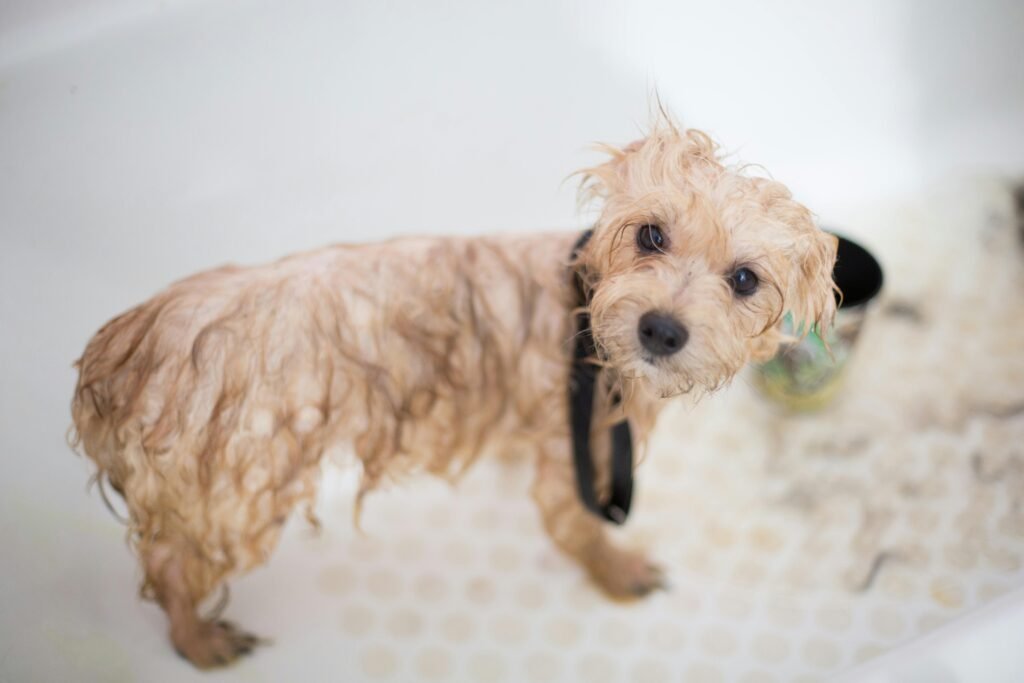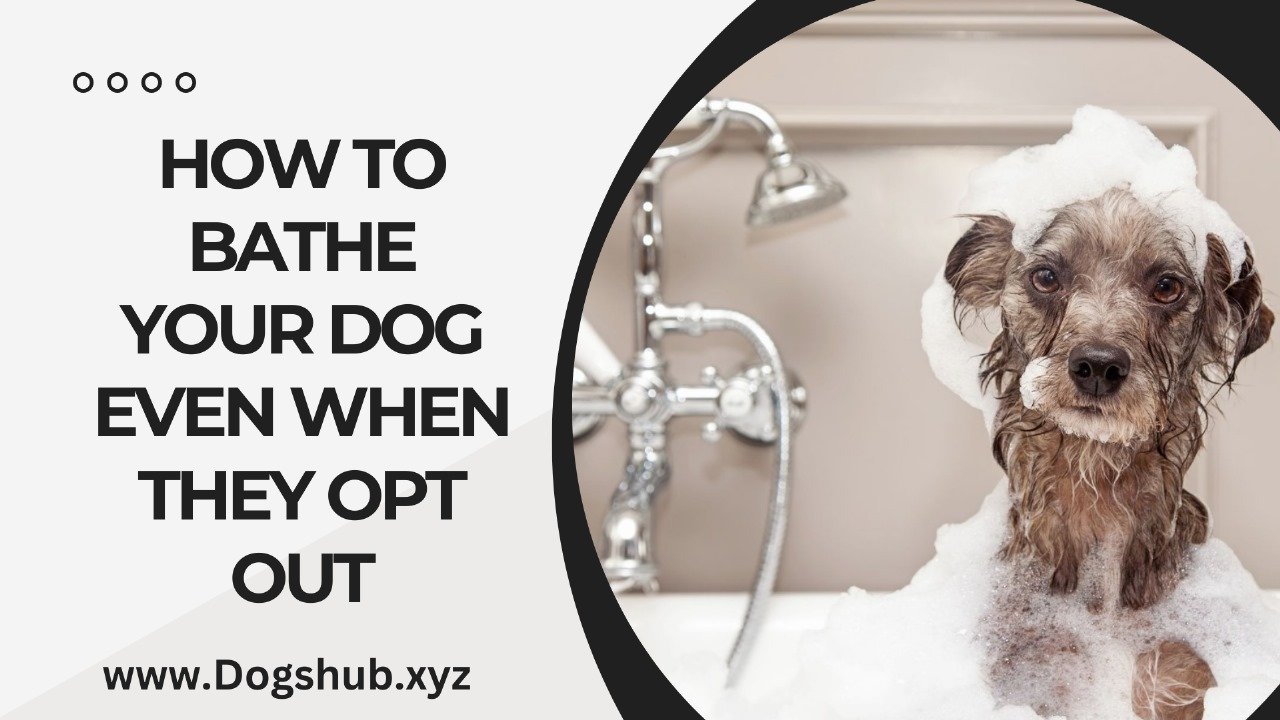Bath time can appear to be an uneasy experience to the dogs of some breeds as they frequently feel trapped and afraid of waters. If your dog does not want to take a bath, or appears unwilling to wash, this could be an issue, because an animal that smells bad isn’t pleasant to have with.
But, regular training and careful handling will benefit pet owners who struggle to get their pets used to being in water, and feel more at ease while they are clean.
Why Dogs Don’t Like Baths
There are dogs who do not like baths. Certain breeds may enjoy splashing around in shallow pools, but have trouble swimming using their smaller legs. Other species, including Labradors or spaniels, seem to have a distant connection to ducks due to their love of with water.
There are three primary reasons that dogs do not like baths or the water.
- Negative Experiences The main reason a dog does not love bathing or taking baths is because it’s a stressful encounter. This can be as straightforward as getting splashed on the face by a puppy or the water, inadvertently getting into the ear of a dog.
- The lack of water Training Puppy as well as young dogs must be socialized properly. One of the ways to do that is introducing them the water at an early age with a positive approach. The training of water for your pet is crucial and you must do it correctly in the first attempt!
- There is no real reason If you are the owner of a dog it could be that they have already-existing issues, which could be fearful of water. It’s helpful to understand the reasons behind it, however it is it is not necessary as all behaviors is able to be tamed by a dog if there is suitable time and patience from the pet’s owner.
Andy Ellis, expert at Posh.co.uk and Posh.co.uk, commented: “Training dogs to get familiar with bath time is an arduous task, however, it’s a vital one to complete.
“Bathing is really important for dogs to benefit prevent nasty odours and bugs from latching onto their fur.”
Top Tips for Getting Your Dog Used to Bathing

This is an overview of the top tricks we have to benefit dogs get used to bathing time
- Warm water
- Make sure to use cups for pouring water.
- Treat good behavior with treats
- Establish routines
- Relax with music
- Make sure to use non-slip mats
- Bubbles!
None of these suggestions will apply to every dog but they’ll benefit to get a dog who isn’t willing to wash.
1. Make use of warm water.
The correct temperature of water is the most important requirement for a reluctant pet. If the water is cold, the dog will begin to sweat If it’s too hot, they could be burned. Due to the fur’s natural texture it is difficult to see the damaged skin, and it may result in your dog biting or scratching the skin, causing harm to more.
Be sure that it is at the correct temperature like you check the temperature of a baby’s water using your elbow, and keep your eye on the temperature during the bath.
2. Pour water into cups together a cup.
There are dogs that are natural water-loving, while others tend to be very cautious or afraid by water. Dogs who are afraid of water, they may be easily scared in bath water, especially if it’s moving fast and hard or if it’s coming from showers. You can scoop up a bit of water in a bottle, or cup, and then gently apply it to their heads as you stroke the dog.
3. Rewards for good behavior
If your dog has been whining while bathing, you can wait until there are a few moments of quiet when they’ve calmed down. You can reward them with small treats so that they can associate at peace and tranquil with an outcome that is positive.
The dog may be terrified to get in the bathtub. If this is the case, gradually bring them in the bath and encourage your dog’s favorite treat. Set them down in the empty bathtub and pamper each time they come to unwind.
4. Daily routine

When your dog is immersed in mud or starts to smell, you should take the time to bathe them. A consistent schedule can benefit your dog become accustomed to baths and make them feel more comfortable over the course of long periods of. It is possible to give them the feature of showering or bathing following every walk, provided there are facilities. They’ll get habitual and will expect to wash after each walk.
5. Music that is relaxing
Music has been shown to soothe dogs during moments when they are stressed. Relaxing music played to the background like birdsong or Mozart will keep your dog’s thoughts while you’re trying to wash them.
Learn more about our blog the top Music Tracks to Calm Your Pooch to benefit ensure they are calm while bathing.
6. Make sure to use non-slip mats
The bathtub is a terrifying place for dogs who are water-lovers. It’s a weird place that is difficult to get a hold of with their feet. Therefore, your dog may have a greater fear of the tub rather than the water. They’re probably scared of falling and injuring them. A mat that is non-slip can serve your dog with a solid equilibrium and make easier washing the dog in a single location.
7. Distraction
There are a variety of methods to disorienting dogs that are not willing to wash.
Bubbles can be a fantastic way to keep the dog’s mind busy. The dog will be more interested in trying to find the bubbles rather than leaving the bath within the tub. Be sure that the products you use for making them are pet-friendly in order to avoid a skin rash.
Bath mats with licks can be found. They usually have an suction cup at the back, so that they’re not submerged. When you apply an lick mat using peanut butter liver paste, cream cheese it can efficaciously keep your dog entertained while you clean them. Additionally, it could change a dog that is very anxious to a calm water dog quickly!
If your dog is enticed to play with toys, schedule bath time as the time to play! It is possible that they’ll splash around however getting wet will be beneficial if they can get used to it!
Q&A
How do you bathe a non-cooking dog?
IMPROVING YOUR DOG’S BATHTIME & OVERCOMING THE HATRED OF BATHING
- Make sure the water’s temperature is at the ideal.
- Improve traction on slippery surfaces.
- Don’t overstimulate your dog.
- Use a desensitization strategy.
- Provide them with something to keep their attention upon (this can be the key weapon)
Do you know how to clean a pet who gets scared?
Slowly add warm water to the tub slowly. Utilize a towel to hose down your pet and make him comfortable with being soaked. Once your pet seems happy with this, you can begin drinking water with an insulated container or handheld shower. Be sure that you keep water and soap away from your dog’s eyes and ears.
How do you bathe a disabled dog?
- Provide padding. Ensure your tub has adequate rubber padding. …
- Position. Position your dog as appropriate to his condition. …
- Add minimal water. Add water to the tub to an appropriate level for your dog so that he is not in danger of being overwhelmed. …
- Wet and shampoo. …
- Rinse and dry.




